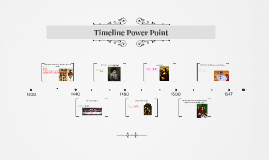Graphic Timeline
Transcript: December 1914 to July 1918 April 9 to 12 1917 Battle of Jutland happened during this period. It was a naval battle fought by the British Royal Navy's grand. Fleet against the imperial German navy's high seas Fleet during the First World War. Fought in the North sea near Jutland. Map showing the Italian losses 1914 to 1918 February to Decenber 1916 The Ottoman Empire accepted their defeat in 1918. After the acceptance of defeat, The Ottoman Empire divided into several new nations. This was the end of the World War 1. January 31st 1917 The Battle of Vimy Ridge, a painting by Richard Jack. Canadian War Museum. May 23rd of 1915 May 7th 1915 Germany announced a policy of unrestricted submarine warfare. to take effect the day following the date of the note . The German Chancellor Theobald von Bethmann-Hollweg spoke before the Reich stag on the same day to explain the reasons for the policy. In effect the policy set in place a blockade of Britain and her European allies, to be applied to belligerent and neutral shipping alike. The German government argued that such a policy was implemented only as an aggressive form of defense. June 1916 to September 1916 April 1915 1918 Italy was allied to Germany and Austria-Hungary but instead Italy joined allied side in May 1915. Italy attacked Austria, making little progress and suffering a great losses. The Battle of the somme was a battle between British, French against German Army. One of the largest battles of the war. The forces involved had suffered more than 1 million casualties, making it one of the bloodiest military operations ever recorded. The Battle of Verdun, Battle between the German and French armies, on hilly terrain north of the city of Verdun-Sur-Meuse in north-eastern France happened. It was the major battles during the first World and resulted 714,321 casualties The Russian Revolution is the collective term for a series of revolutions in Russia in 1917, which destroyed the Tsarist autocracy and led to the creation of the Soviet Union. The Tsar was deposed and replaced by a provisional government in the first revolution of March 1917. In the second revolution, during October, the Provisional Government was removed and replaced with a Bolshevik (Communist) government. By Nick Park May 1916 to June 1916 The Battle of Passchendaele, was a campaign of the Great War 1914–1918, fought by the British and French empires and their allies against the German empire. The battle took place on the Western Front, between June and November 1917, for control of the ridges south and east of the Belgian city of Ypres in West Flanders, as part of a strategy agreed by the Allies at conferences in November 1916 and May 1917. Passchendaele lay on the last ridge east of Ypres, five miles from a railway junction at Roulers, which was a vital part of the supply system of the German Fourth Army. The battle of Caporetto, the battle on the Austro-Italian front of World War 1. The battle was named after the Italian name of the town of kobarid. Austro-Hungarian forces, reinforced by German units, were able to break into the Italian front line and rout the Italian army, which had practically no mobile reserves. The battle was a demonstration of the effectiveness of the use of stormtroopers and the infiltration tactics developed in part by Oskar von Hutier. The use of poison gas by the Germans played a key role in the collapse of the Italian Second Army.[ The Battle of Champagne is the name of three battles fought in the Champagne region of northern France during World War 1. First Battle of Champagne happened in December 20th of 1914 to March 17th of 1915, Second Battle happened during September 25th of 1915 to October 6th of 1915, The Third Battle happened during April 15 to 17 of 1917. The United States declared war on Germany allying to allied side. U.S President Woodrow Wilson outlined the case for declaring war upon Germany in a speech to the joint houses of congress on 2 April 1917. Graphic Timeline July 1916 to November 1916 The battle of Vimy Ridge happened in the Nord-Pas-de-calais region of France. The main combatants were the Canadian corps, of four divisions. Against three divisions of German sixth Army. It was part of the opening phase of the British-led Battle of Arras, a diversionary attack for the French Nivelle Offensive. August 4th of 1917 A French trench in northeastern France Thank you for reading? An aerial view of the Somme battlefield in July, taken from a British balloon near Bécourt 1917 The Brusilov Offensive, also known as the June Advance, was the Russian Empire's greatest feat of arms during World War I, and among the most lethal battles in world history. It was a major offensive against the armies of the Central Powers on the Eastern Front, launched on June 4, 1916, and lasting until late September. It took place in what today is Ukraine. April 6th of 1917 Second Battle of Ypres happened in April of 1915, It was a First battle in World War 1. The battle was

















